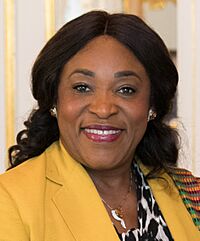Commonwealth Secretary-General facts for kids
Quick facts for kids Secretary-General of theCommonwealth of Nations |
|
|---|---|
| Style | Her Excellency |
| Residence | Garden House |
| Appointer | Commonwealth Heads of Government |
| Term length | Four years renewable once |
| Inaugural holder | Arnold Smith |
The Commonwealth Secretary-General is a very important leader for the Commonwealth of Nations. This person is in charge of the Commonwealth Secretariat. The Secretariat is like the main office that helps all the Commonwealth countries work together. It has been around since 1965. The Secretary-General also speaks for the Commonwealth to the rest of the world. It's important not to confuse this role with the head of the Commonwealth, who is a different position.
Contents
What the Secretary-General Does
Leading the Commonwealth Secretariat
The job of Secretary-General was created in 1965. This happened after a big meeting of Commonwealth leaders in London. They decided that the Secretary-General and their team should serve all Commonwealth countries. They get their power from the Commonwealth Heads of Government. This means the Secretary-General can talk directly with the leaders of member countries.
The Secretary-General's Office
The main office for the Secretary-General and the Secretariat is Marlborough House in London. This building used to be a royal home. Queen Elizabeth II gave it to the Secretariat to use. Because the building is not big enough for everyone, some staff work in other offices nearby in London. A big part of the Secretary-General's job is to travel. They visit different Commonwealth countries to stay in touch with their governments.
Team and Responsibilities
Who Works with the Secretary-General
The Secretary-General leads the whole Commonwealth Secretariat team. All the staff report to them. They get help from three Deputy Secretaries-General. These deputies are chosen by the Commonwealth heads of government. They are usually selected through the countries' high commissioners in London.
How Staff are Chosen
The Secretary-General can hire junior staff if the Secretariat has enough money. For more senior staff, the Secretary-General chooses from a list of people suggested by the heads of government. In reality, the Secretary-General has a lot of influence. Member governments often ask for their opinion on who to nominate. Sometimes, the Secretary-General even suggests people themselves.
The Secretary-General's Status
Officially, the Secretary-General has the same rank as a high commissioner or an ambassador. But in practice, their rank is much higher. At big meetings like the Commonwealth Heads of Government Meetings (CHOGMs), they are seen as equal to the heads of government. They report on their work at these CHOGM meetings, which happen every two years. The Commonwealth's Board of Governors in London also holds the Secretary-General responsible.
How the Secretary-General is Chosen
The Election Process
Since 1993, the Secretary-General can serve for a maximum of two four-year terms. The election happens at every other CHOGM. The leaders of the member countries vote. Countries suggest their candidates, and they support them through the election. They can also decide to remove their candidate if they wish.
Voting for the Leader
The election takes place in a special meeting called a "Restricted Session." Only heads of government or their main representatives can be there. The leader of the host country for the CHOGM helps manage the election. They find out which candidate has the most support. This is done through talks and secret votes.
Re-election and Challenges
Sometimes, a Secretary-General seeking a second term is elected without anyone else running against them. This used to be a common practice. However, this tradition was broken in 2003 when Sri Lanka's Lakshman Kadirgamar tried to replace New Zealand's Don McKinnon. McKinnon won easily. In 2019, it was confirmed that a Secretary-General can be challenged for a second term.
In 2011, Kamalesh Sharma from India was re-elected for his second term without opposition. He had first won the position in 2007. In 2015, Patricia Scotland from Dominica became the 6th Commonwealth Secretary-General. She was the first woman to hold this important job. She started her term on April 1, 2016. Lady Scotland was challenged for her second term in 2022 but won. Because the CHOGM had been delayed, she agreed to serve for only two more years.
On April 1, 2025, Shirley Ayorkor Botchwey from Ghana became the new Commonwealth Secretary-General. She was elected at the 2024 CHOGM.
List of Secretaries-General
| No. | Portrait | Name | Country | Term start | Term end | Background | Head (Tenure) |
|---|---|---|---|---|---|---|---|
| 1 |  |
Arnold Smith | 1 July 1965 | 30 June 1975 | Canadian ambassador to Egypt (1958–1961) Canadian ambassador to the USSR (1961–1963) |
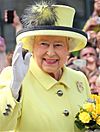 Elizabeth II (1952–2022) |
|
| 2 | 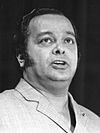 |
Sir Shridath Ramphal | 1 July 1975 | 30 June 1990 | Foreign Minister of Guyana (1972–1975) | ||
| 3 | 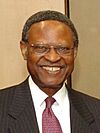 |
Emeka Anyaoku | 1 July 1990 | 31 March 2000 | Deputy Secretary-General for Political Affairs (1977–1990) | ||
| 4 | 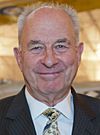 |
Don McKinnon | 1 April 2000 | 31 March 2008 | Deputy Prime Minister of New Zealand (1990–1996) Minister of Trade (1990–1996) Minister of Foreign Affairs (1990–1999) |
||
| 5 | 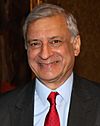 |
Kamalesh Sharma | 1 April 2008 | 31 March 2016 | Permanent Representative of India to the United Nations (1997–2002) Indian High Commissioner to the United Kingdom (2004–2008) |
||
| 6 | 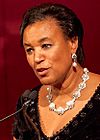 |
Patricia Scotland Baroness Scotland of Asthal |
1 April 2016 | 31 March 2025 | Attorney General for England and Wales and Northern Ireland (2007–2010) UK Minister of State (Home Office; 2003–2007) |
||
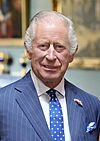 Charles III (2022–present) |
|||||||
| 7 | 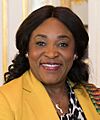 |
Shirley Ayorkor Botchwey | 1 April 2025 | Incumbent | Minister for Foreign Affairs for Ghana (2017–2025) |


